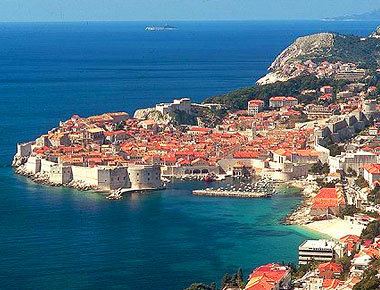Area 89.28 km² Local time Saturday 11:30 PM Area code 020 | County Dubrovnik–Neretva Website www.blato.hr Population 3,593 (2011) Postal code 20271 | |
 | ||
Weather 14°C, Wind SE at 32 km/h, 77% Humidity | ||
Blato is a town on the island of Korčula in Croatia. It is a municipal centre and can be reached by the main island road from city of Korčula. The road runs through the forests in the middle of the island of Korčula.
Contents
- Map of Blato Croatia
- Geography
- History
- Municipality of Blato
- Demographics
- Economy
- Education
- Culture
- Notable people
- References
Map of Blato, Croatia
Geography
The town was amphitheatrically built on several hills around a small central valley (40 km away from the town of Korčula). A long avenue of lime trees called Zlinje runs through it, along with the towns public buildings (recently built: schools, hotel, bank, shops, municipal building, medical centre etc.). There is a City park that provides exceptional shade during the summer months.
The climate in Blato matches the entire island of Korčula - it is located in the Adriatic which has a Mediterranean climate, characterized by long, quiet, dry and hot summer days with clear, short and mild wet winters. During the entire year the temperatures go below 10 °C in January and February, while June, July, August and September they average above 20 °C. Rainfall is typically Mediterranean, with a peak in late autumn and early winter and a minimum in July.
History
Blato got its name from a neighbouring field which flooded on regular basis, until 1911. The Blato field was occasionally drained. This created a lake that dried up during summer. The construction of canals and tunnels channelled drainage water into the sea on the north coast. It created conditions for successful exploitation of more fertile land in this region.
The town itself is one of the oldest settlements on Korčula and is situated in the middle of the western part of a field. The area of Blato is believed to have been settled during Roman times. There is a church, Our Lady of the Field, located on the Blato Field that has Roman floors that place its beginnings in the 4th century. Archaeological remains of Roman Junianum (agricultural estate) have been discovered. Other remains have been found in the local area dating back to prehistoric and Illyrian times.
Between World War I and World War II, when phylloxera attacked the grape vines, causing them to perish en masse. This greatly contributed to the economic crisis that was happening within the newly formed Yugoslavia. Blato was facing a mass exodus. It was the sixth largest place in Dalmatia, then a region of Austro-Hungary (Blato in 1910 had a population of 7102 ). During 1924 and 1925, about 890 residents abandoned their homes and left Blato. Whole families emigrated. to Australia and Brazil (especially São Paulo).
During World War II Blato was bombed by the Allies.
Municipality of Blato
The Municipality of Blato, situated on the island of Korčula, administratively falls under the Dubrovnik-Neretva County. The Municipality is made up of Blato and Potirna. It has access to the sea on both sides of the island. Once the main port of Blato, Prigradica is located about 3 km north of the town of Blato. The municipality's coastline is 36.3 kilometers in length. Within the area are olive trees and vineyards.
Demographics
According to the 2011 census, the municipality of Blato has population of 3,593. The vast majority of the population are Roman Catholics.
Economy
During the long history of Blato, the economy has been oriented around the production of agricultural products, especially wine. olive oil, wine, carob and fig trees are the most significant products of the region. In the early 20th century Blato produced over 1000 carts of wine and 30 wagons of olive oil for export. In addition, they produced legumes and cereals for their own use. Strong development of agriculture led to the development of ancillary services such as crafts and commercial activities.
After the Second World War, Blato began a new cycle of development. They further developed the metal industry, textile industry, Tourism and the agricultural industry. The population continued to decline, albeit more slowly than before. Industrial production in Blato, in recent times has seen a down turn with the closure of the textile factory Trikop. Metal industry and agriculture remains important for the economy. Tourism now plays an important role. Hotels and private apartments in Prizba and Prigadica have given new momentum to the economy of Blato.
The main economic entities in Blato today are:
Education
Culture
The town is known for a famous sword dance, the Kumpanija, which is performed on April 28, the day of Saint Vincenca, the town's patron saint, Blato Public library, sanctuary, etno-museum, etc.
